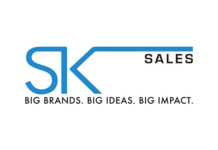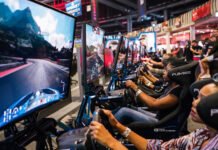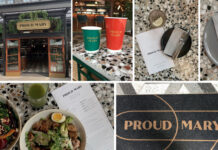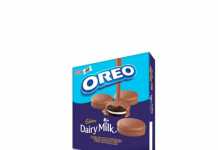As consumers tighten their belts and look for even more value from retailers ahead of the festive season, the focus for malls has to be about moving product off the shelves rather than brand building.
The South African Council of Shopping Centres (SACSC) currently lists 1653 shopping centres generating R663 billion in retail sales annually – that’s nothing to sneeze at.
Brand building definitely has its place, don’t get me wrong, but in today’s economy, we’re seeing more and more advertisers focusing on moving product, offering value to consumers and persuading them to either trial their brand for the first time or to be a repeat user.
Communication methods have become a lot more targeted in the mall space too. Advertisers want exclusivity, to be able to dominate a space and even be 
gender exclusive in their messaging. Washroom advertising is one such avenue where marketers are finding that their brands can achieve these objectives through the use of branding platforms like mirror decals, floor decals, cubicle wraps, A4 frames on the back of washroom doors for the ladies and above the urinals for the men.
But it’s not just in the washroom where marketers are making an impact. There are a plethora of branding opportunities within shopping centres and each is an opportunity to engage with a shopper while they’re in the shopping frame of mind. Branded escalators, lifts, hanging banners, shop window fronts, point of sale and digital screens within retailers, digital mall directories, video walls, external billboards etc. What’s more is that these platforms are very cost effective when comparing the cost per thousand (CPM) against other media types.
The added benefit for marketers advertising a very specific product offer or service is that 95% of the time, that offer is available in the very mall that the consumer is already walking around in and can act on that offer immediately.
Millward Brown’s Mall Case Study, with research over the period November 2014 – August 2015, shows that in-mall advertising media adds 21% in awareness, second to that of TV. That figures rises to 38% when targeting LSM 8-10 shoppers. Brand health tracking scores also indicated that in-mall advertising positively influenced decision making by a further 6%.
According to TGI (2015 B), 59% of SA’s population visits a shopping centre every month with an average dwell time of 2 hours and 30 minutes and three visits per month. That’s a substantial amount of time for marketers to have ‘face time’ with their direct target markets.
GIBS Shopernomics 2014 shows that 8 in 10 consumers make a purchase every time they’re in the mall, with 4 in 10 of these being unplanned purchases. We know, therefore, that consumers are definitely influenced by the communication and advertising messaging they see in the mall, which is why it makes sense (and Rands) to advertise there.
While moving products off shelves within the mall environment is of paramount importance, making the consumer aware at the point of purchase or while he/she is in ‘shopping mode’ drives the impulse shopping behaviour. Research has shown that shoppers crave the engagement that mall shopping offers*. Mall advertising leverages this opportunity!
Agree with Greg? Get in touch with him at greg@tlc-media.co.za or 011 562 6402.
TLC is a Primedia Unlimited company.
*http://www.nielsen.com/us/en/insights/reports/2014/2014-state-of-the-shopping-center.html
























































































